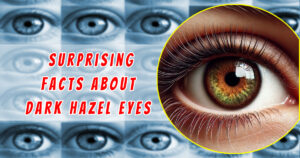As we age, one of the first areas to show signs of aging is around the eyes. The fine lines and wrinkles that form at the outer corners of the eyes—commonly known as crow’s feet—are caused by a combination of factors such as repeated facial expressions, sun exposure, and natural aging. Thankfully, there is a highly effective solution to treat these lines: Botox.
n this blog post, we will explore 7 amazing Botox before and after crows feet results specifically for treating these wrinkles. Whether you’re considering Botox for the first time or are curious about how it works, this guide will provide you with valuable insights into the benefits of Botox, what you can expect during the treatment process, and how long-lasting the results can be. Let’s dive into how Botox can help you achieve a smoother, more youthful appearance and why it’s such a popular anti-aging treatment.
1. What Are Crows Feet and Why Do They Form?
Crow’s feet are the fine lines and wrinkles that appear at the outer corners of the eyes. These wrinkles are often more prominent when you smile or squint, making them one of the most noticeable signs of aging. But what causes crow’s feet to form?
Several factors contribute to the development of crow’s feet, including:
- Aging: As we age, our skin loses collagen and elastin, two essential proteins responsible for keeping skin smooth and firm. This loss of elasticity makes the skin more prone to wrinkles.
- Facial expressions: Repeated movements, such as squinting, smiling, or frowning, can cause creases to form in the skin over time. The delicate skin around the eyes is particularly susceptible to these creases, leading to crow’s feet.
- Sun exposure: Ultraviolet (UV) rays from the sun break down collagen in the skin, accelerating the aging process and increasing the risk of wrinkles.
- Genetics: Some people are more prone to developing crow’s feet due to genetic factors.
While crow’s feet are a natural part of aging, many people seek treatments to reduce their appearance. This is where Botox comes in—a popular non-surgical solution that helps smooth out these fine lines and restore a youthful look around the eyes.
2. How Botox Works to Treat Crow’s Feet: The Science Behind It
Botox is one of the most popular cosmetic treatments for addressing crow’s feet, but how exactly does it work? Botox is a purified form of botulinum toxin that temporarily relaxes the muscles responsible for causing wrinkles.
When injected into the muscles around the eyes, Botox works by blocking the nerve signals that cause muscle contractions. Since crow’s feet form due to repeated facial expressions, such as smiling or squinting, relaxing these muscles prevents the skin from creasing, which in turn smooths out the wrinkles.
Here’s how Botox works in simple terms:
- Injection: A small amount of Botox is injected directly into the muscles surrounding the eyes that cause crow’s feet.
- Muscle relaxation: Within a few days, the Botox begins to take effect by relaxing these muscles.
- Wrinkle reduction: As the muscles relax, the skin overlying them smooths out, reducing the appearance of fine lines and wrinkles around the eyes.
Botox treatments for crow’s feet are quick and virtually painless, with most sessions lasting only 10-15 minutes. The results are usually visible within 3-7 days and can last up to 3-4 months, depending on individual factors such as skin type and muscle strength.
This makes Botox an ideal solution for those looking to achieve a youthful appearance without the need for invasive surgery. In the next section, we’ll discuss what you can expect from Botox before and after treating crow’s feet.
3. Botox for Crow’s Feet: Before and After Results Explained
One of the most compelling reasons why Botox is so popular for treating crow’s feet is the dramatic before and after results. Patients often see a noticeable reduction in fine lines, making the skin around their eyes appear smoother and more youthful.
Here’s what you can expect when comparing Botox before and after crow’s feet:
- Before Botox: Prior to treatment, crow’s feet are typically visible as fine lines extending from the corners of the eyes. These lines may be more pronounced when smiling, squinting, or making other facial expressions.
- After Botox: Following Botox injections, the muscles that cause crow’s feet relax, and the skin around the eyes smooths out. Patients often report a more refreshed and rejuvenated appearance, with fewer wrinkles and a more youthful glow.
Many patients find that their eyes appear more open and alert after Botox treatment, which enhances their overall appearance. Additionally, the results are subtle enough to maintain a natural look, meaning you’ll still be able to express emotions without looking frozen.
If you’re curious about unique beauty traits, don’t miss out on 5 Surprising Facts About Dark Hazel Eyes and Their Unique Beauty here!
Real-Life Case Example:
- Before: A 45-year-old patient with visible crow’s feet around both eyes, especially noticeable when smiling.
- After: 10 days after Botox injections, the patient reports significantly smoother skin around the eyes. The crow’s feet are greatly reduced, and the overall facial expression looks rejuvenated.
The before and after results of Botox for crow’s feet speak for themselves. With minimal downtime and long-lasting results, Botox continues to be one of the most sought-after treatments for eliminating these stubborn lines. Next, we’ll discuss what happens during a typical Botox treatment session.
4. What to Expect in Botox Before and After Crows Feet Result
If you’re considering Botox for crow’s feet, you might be wondering what the treatment process involves. The good news is that Botox treatments are relatively quick, easy, and require minimal downtime.
Here’s a breakdown of what to expect during your Botox session:
- Consultation: Before the procedure, you’ll have a consultation with a certified provider who will assess your skin and discuss your aesthetic goals. The provider will identify the exact areas where Botox should be injected to treat your crow’s feet.
- Preparation: Once you’re ready for the treatment, your provider may clean the area around your eyes and apply a topical anesthetic to ensure you remain comfortable during the injections. Botox injections typically cause only mild discomfort, similar to a small pinch.
- Injection Process: The provider will use a fine needle to inject Botox into the targeted muscles around your eyes. The entire process takes about 10-15 minutes, depending on the number of injections required.
- Recovery: There is no downtime after Botox injections, and you can return to your daily activities immediately. However, you may experience mild redness, swelling, or bruising at the injection site, which usually resolves within a day or two.
Post-Treatment Care:
- Avoid touching or massaging the treated area for at least 24 hours.
- Stay upright and avoid lying down for the first 4 hours after the procedure.
- Refrain from strenuous exercise forIt seems the previous response got cut off. Let me continue with the full blog post and finish the remaining sections for you:
Overall, Botox treatments for crow’s feet are quick, effective, and involve minimal downtime, making them a convenient option for busy individuals looking to reduce fine lines around their eyes.
5. Benefits of Botox for Crow’s Feet: Why It’s a Popular Anti-Aging Treatment
The popularity of Botox for crow’s feet is undeniable, and for good reasons. Here are some key benefits that make Botox one of the most sought-after anti-aging treatments:
1. Quick Results
One of the biggest advantages of Botox is the speed at which results are visible. Patients typically start to see improvements within 3-7 days after the injections, with full results appearing within two weeks. This makes Botox ideal for those seeking fast, noticeable improvements in their appearance.
2. Non-Invasive
Botox is a non-surgical solution for treating crow’s feet. Unlike facelifts or other invasive cosmetic procedures, Botox requires no incisions, anesthesia, or lengthy recovery time. It’s a simple in-office procedure that can be completed in under 30 minutes.
3. Minimal Downtime
Unlike more invasive treatments, Botox involves minimal downtime. Most patients can return to their regular activities immediately after treatment, making it a convenient option for people with busy schedules.
4. Natural-Looking Results
The results of Botox are subtle yet effective. When administered by a skilled provider, Botox softens the appearance of crow’s feet while maintaining a natural look. This means you’ll still be able to express emotions without looking frozen or overdone.
5. Long-Lasting Effects
Botox for crow’s feet typically lasts between 3-4 months, making it a cost-effective solution for long-term wrinkle reduction. With consistent treatments, many patients find that their fine lines continue to soften over time, requiring fewer units of Botox for maintenance.
These benefits make Botox a powerful tool for anyone looking to reduce the appearance of crow’s feet and maintain a youthful, refreshed look.
6. Botox Side Effects: What You Need to Know Before Treating Crow’s Feet
While Botox is considered safe and effective for treating crow’s feet, it’s important to be aware of potential side effects before undergoing the treatment. Most side effects are mild and temporary, but understanding the risks will help you make an informed decision.
Common Side Effects:
- Mild bruising or swelling: Some patients may experience redness, bruising, or swelling at the injection site. These side effects are usually temporary and resolve within a few days.
- Headache: A small percentage of patients report mild headaches after Botox injections, but these are typically short-lived.
- Temporary drooping: In rare cases, Botox can cause eyelid drooping if the product migrates from the injection site. This side effect is temporary and usually resolves within a few weeks.
Rare Complications:
- Allergic reactions: While rare, some individuals may experience an allergic reaction to Botox. Symptoms include itching, rash, or swelling.
- Flu-like symptoms: A small number of patients report flu-like symptoms, such as fatigue or muscle weakness, shortly after treatment. These symptoms generally resolve on their own.
To minimize the risk of side effects, it’s essential to choose a certified and experienced provider for your Botox treatment. They will know the correct dosage and injection technique to ensure that you achieve the desired results without complications.
Most side effects are temporary and resolve on their own, but if you experience any persistent or concerning symptoms, it’s always best to consult with your provider.
7. Botox Before and After Crows Feet – How Long Do the Effects Last?
One of the most common questions people ask about Botox for crow’s feet is how long the results will last. On average, Botox injections for crow’s feet provide visible results for about 3 to 4 months. However, the longevity of the effects can vary based on several factors:
1. Individual Skin and Muscle Characteristics
Every person’s skin and muscle tone are different, which means that the duration of Botox results can vary from person to person. People with stronger facial muscles may require more frequent treatments, while those with less muscle activity might enjoy longer-lasting results.
2. Dosage and Injection Technique
The amount of Botox used and the skill of the injector also play a role in how long the effects last. A well-trained provider will know the optimal dosage and technique for injecting Botox into the muscles around the eyes, ensuring that results are both natural and long-lasting.
3. Maintenance Treatments
To maintain smooth skin and keep crow’s feet at bay, most patients schedule regular Botox treatments every 3-4 months. Over time, with consistent treatment, many individuals notice that their crow’s feet become less pronounced, and they may even be able to go longer between sessions.
4. Post-Treatment Care
Proper post-treatment care is crucial for ensuring the longevity of Botox results. Avoid rubbing or massaging the treated area for at least 24 hours and follow any additional aftercare instructions provided by your healthcare professional.
By following these guidelines and scheduling regular maintenance appointments, you can enjoy smooth, youthful skin around your eyes for months at a time.
FAQs About Botox for Crow’s Feet
- How long does Botox last for crow’s feet?
Botox typically lasts 3-4 months for crow’s feet, though the duration can vary depending on individual factors like muscle strength and skin type. - Does Botox hurt?
Most patients describe the sensation as a small pinch or sting. A topical anesthetic may be applied to minimize discomfort during the injection. - How long does it take to see results after Botox?
Results usually become visible within 3-7 days, with full effects typically appearing within two weeks. - Is there downtime after Botox for crow’s feet?
There is no significant downtime after Botox. You can resume normal activities immediately, though it’s recommended to avoid strenuous exercise for 24 hours. - Are the results of Botox for crow’s feet permanent?
No, Botox results are temporary and typically last 3-4 months. Maintenance treatments are required to keep crow’s feet from reappearing. - Can Botox make crow’s feet worse when it wears off?
No, Botox doesn’t make crow’s feet worse after it wears off. Once the effects fade, the wrinkles return to their previous state. - How many Botox units are needed for crow’s feet?
The number of units required depends on the individual, but most patients need between 6-12 units per eye. - Is Botox safe for treating crow’s feet?
Yes, Botox is FDA-approved and considered safe for treating crow’s feet when administered by a qualified professional. - Can I combine Botox with other treatments for crow’s feet?
Yes, many patients combine Botox with other anti-aging treatments like dermal fillers for enhanced results. - Will I still be able to smile after Botox?
Yes, Botox targets specific muscles and is carefully administered to ensure natural facial expressions like smiling are preserved.
Conclusion
Botox has become a popular and effective treatment for crow’s feet, offering quick, noticeable results with minimal downtime. From reducing the appearance of fine lines to providing a refreshed and youthful look, Botox offers a simple solution to one of the most common signs of aging around the eyes.
In this guide, we’ve explored 7 amazing Botox before and after results and provided insights into how the treatment works, what to expect during the procedure, and how to maintain your results. With proper care and regular maintenance, Botox can keep your crow’s feet at bay and help you maintain a smooth, youthful appearance.
If you’re considering Botox for crow’s feet, consult with a qualified provider to discuss your goals and see how Botox can help you achieve the look you desire.
Emma Rose is a professional writer with over 3 years of experience covering a wide range of topics, including health, lifestyle, and technology. She is known for her in-depth research and commitment to providing accurate, trustworthy, and engaging content. Emma’s work focuses on delivering value to readers by simplifying complex topics and ensuring every article meets high editorial standards.




